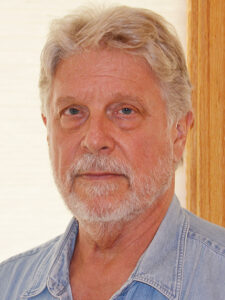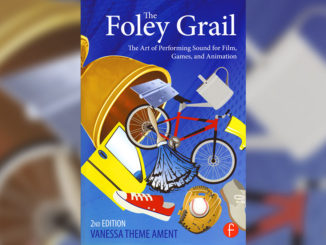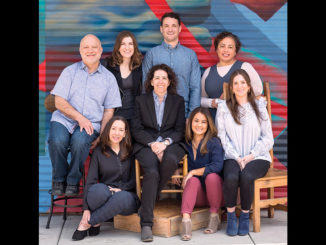
by Peter Tonguette
The canvas of The Right Stuff (1983) is rightly thought of as large — Herculean, even. In recounting the history of America’s valiant test pilots and astronauts, writer-director Philip Kaufman’s adaptation of Tom Wolfe’s acclaimed book is peopled by an enormous cast, and it traverses the earth, sea and outer space. Yet the film is equally memorable for its images (captured by gifted cinematographer Caleb Deschanel, ASC) of solitary men hurtling toward the cosmos. They are alone — very alone — as they venture to parts unknown.
Near the end of the film, Captain Chuck Yeager (Sam Shepard) has to eject from a plane that just caressed the outer tips of the atmosphere, and his fate for several moments is unknown. A boxy air force ambulance is given the unhappy job of locating the pilot. But then we glimpse Yeager — obscured by the glistening heat — in a long shot, his parachute trailing him. The ambulance driver points and asks, “Sir, over there; — is that a man?” The thrilling answer comes: ““Yeah, you damn right it is!” It is a rousing moment, emblematic of the film’s lionizing tone. As the scene concludes, we cut to a tighter shot of Yeager up and moving, a stick of his lucky gum still in his mouth.
A lone figure marching onward… Is it really so different than having your name called on Oscar night? In the spring of 1984, winning an Academy Award was the furthest thing from the mind of the film’s nominated supervising sound editor Jay Boekelheide. Preoccupied with a busy career and a young family, he missed the pre- awards lunch, and he knew little of the rules of the game. On the night of the ceremony, on April 9, he was late to arrive at the Dorothy Chandler Pavilion, but no sooner did he sit down than he was called to his feet. Boekelheide won the Oscar for Best Sound Effects Editing for his contributions to The Right Stuff.

When he found himself on stage, he faced a thousand watts of light and a screen with numbers counting down. “I was petrified in some literal sense,” recalls Boekelheide. “I was a deer in headlights. My mother and my brother, both of whom are doctors, thought I was having a heart attack. I don’t think I was, but I was really freaked.”
After he finished his acceptance speech, he retired to a bar, where he drank “half a bottle of whiskey, which did nothing to me,” he laughs. “It didn’t even take my pulse down below 200!” The next morning, waiting for a flight at LAX, he found himself with a deadening hangover — but also a permanent (and unexpected) career change.
“It confirmed me in the business’ mind as a supervising sound editor, which I went on to exploit because it was the most remunerative thing that I could do,” he says, but it was not his original plan. Following stints making a documentary in the Peace Corps, and studying film theory in France en route to a PhD, Boekelheide began his professional career thinking he would work in picture, rather than sound, and one of his earliest credits was as an assistant film editor on Francis Ford Coppola’s Apocalypse Now (1979). In fact, he was brought onto The Right Stuff by Walter Murch, A.C.E., CAS, MPSE, who worked on the film’s picture editing (uncredited) for a spell, to work in the same capacity. (The film’s credited editors were Glenn Farr, A.C.E., Lisa Fruchtman, A.C.E., Stephen A. Rotter, Douglas Stewart and Tom Rolf, A.C.E., who were also honored with Oscars.)
In the end, while not credited as such, Boekelheide did a fair amount of picture editing on The Right Stuff, but he won huzzahs for leading a vast team of sound editors, re-recording mixers, engineers and technicians. The job came about by being in the right place at the right time. “I was given the job of finding somebody to do the sound,” he reveals. “Phil would say to me, ‘See if you can get Walter to do this.’ I would talk to Walter, and he was doing other things. In the end, I had to do it because I couldn’t find anybody else.”
Boekelheide toiled on the film for two years, and the atmosphere on the set was charged with creativity. In its improvisatory production approach, he compares it to Apocalypse Now, though he is careful to distinguish the two films: “What Apocalypse was supposed to be was never settled. The Right Stuff was a sketch to fill in, a map to follow, a script to embody.” Which didn’t mean, however, that experimentation was not encouraged within the framework provided by Wolfe’s book.

With its 70mm six-track sound mix, The Right Stuff is a big, loud film. Think of the roar of Yeager’s X-1 on October 14, 1947 — the day he broke the sound barrier — or the simmer of the red-hot flames of the Sputnik satellite as it takes off from the launch pad. “We went out and recorded the space shuttle taking off and recorded on an aircraft carrier,” Boekelheide says, adding, “We went all sorts of places. A lot of it was sort of taking a hundred interns and throwing them in the wind, to see what they can come up with.” The experience left him slightly deaf in both ears, as he discovered 25 years later, initially suspecting that it was hereditary. “It is almost surely from having spent a year listening to all of that at full blast,” he says. The primary tool used to capture sound was an eight-track recorder that Boekelheide purchased used.
At the same time, odder, quirkier and altogether quieter choices were also made. “The journalist characters are accompanied by insect sounds,” Boekelheide notes, referring to the incessant hissing that signals the presence of writers bearing pens and pads. He adds, “Walter sent me a tape recording of finger rubbings on a glass shower door as a kind of creepy sound for space. It’s full of things like that.” During the scene in which the identities of the Mercury astronauts — including John Glenn (Ed Harris), Gus Grissom (Fred Ward) and Alan Shepard (Scott Glenn) — are announced, disparate sounds are introduced, including waves of applause from the audience and, at a climactic moment, the strains of Handel’s “Messiah.”
Boekelheide feels he is on surest ground when thinking of sound in intellectual, rather than instinctual, terms, but one of the scenes of which he is most proud in The Right Stuff was one whose effect he could not fully foresee: “I probably cut the tracks but I did not imagine ahead of time what was going to happen exactly,” he says. “We dolly along the edge of a plane out of a hangar and into the Cow Palace in San Francisco for a massive political rally. The sound opens up into that crowd space. That was totally intentional — and it was radically more effective than I thought it would be.”

More than 100 people worked in the sound department on The Right Stuff, and Boekelheide sees his Oscar as being their win as well, pointing specifically to the contributions of sound re-recording mixers Mark Berger, CAS, Todd Boekelheide (his brother and himself an Oscar winner for 1984’s Amadeus), Tom Scott and Randy Thom, CAS, as well as sound effects mixer David Parker. “The group of people who were involved in this — and whose talent and interest is essentially only audio — was huge,” he says.
Observing that his background in film editing bred a concern for the film as a whole, Boekelheide offers, “In its own way, my winning for this is a kind of oddity in the sense that I’m probably individually less talented than all of them, but because I had some distance from it and also an investment and interest in the picture side, I was trying to imagine ways to make the whole thing work.”
In an irony he appreciates, the success of The Right Stuff catapulted Boekelheide into sound editing for good, making it easy for him to be picky about the jobs he took in that field. Subsequent films include such ambitious and challenging projects as Milos Forman’s Amadeus and Tim Hunter’s River’s Edge (1986). On the other side of the coin, that success made it more difficult for him to indulge in picture editing, except on smaller-scale projects.
“The weird thing about all of this is that, of my entire family, I’m probably the least talented in terms of audio,” he says. “My father is a composer and a violinist, and my brother Todd is a composer and a mixer as well — and a very good one. And my two other brothers are musicians. I am none of those things! I was the guy who sat in the corner reading while they were playing music.”





